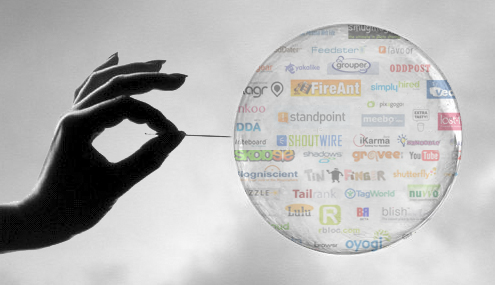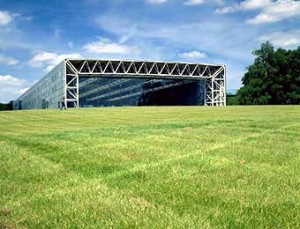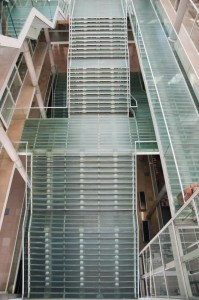
We are experiencing a tech boom during a financial crisis. Not just a mere slump but what threatens to be a continuation of global financial meltdown that started with sub-prime mortgages in the US and now concerns sub-prime countries in Europe. According to people who are not prone to hyperbole, like the governor of the Bank of England, we’re in a period worse than the Great Depression of the 1930s. But in San Francisco, at least for some, everything is swell. Twenty year old college dropouts are once more raising millions armed with nothing more than a PowerPoint presentation. As people around the world are protesting banks, people in flip-flops, t-shirts and jeans that look like they would normally be protesting banks are embracing the world’s purest form of capitalism.
People are just starting to call the top of this latest wave in tech, however, in the Wall Street Journal AngelList reports valuations are nearly half what the were six months ago. As someone who was very much a participant in the last tech bubble, I feel I’ve seen this movie before, and maybe there’s something to learn from a quick recap of the prequel.
The dotcom bubble was a form of mass hysteria. By the beginning of 1999, if you were working in technology in the Bay Area, you never needed to buy a drink, the SFGirl website listed which dotcom parties to crash, on a daily basis. These parties were often lavish affairs, such as Ask Jeeves’ in April 2000, where Elvis Costello played. A variety of networking events, such as Drink Exchange were replicated around the world, First Tuesday, a European Internet cocktail party sold for $50million.
This mania wasn’t entirely unfounded it was driven by the realization that the Internet was going to fundamentally change the way that businesses work, that connecting people together via a many-to-many communications network rather than a one-to-many broadcast system, would lay the foundation for a something that would dis-intermediate many of the middle men in business, from music companies to newspapers.
Middle men act where where there is a lack of information or a network disconnect, where the buyer does not know how to find a seller a middle man jealously guards a few contacts and profits. The Internet was about the free flow of data, information liquidity, it promised to replace armies of brokers, trade secrets and hidden contacts with software which connects buyers and sellers or finders and seekers, directly. The dotcom bubble burst when people applied the increasingly over-optimistic belief in people to instantly deliver on the promises of this revolution to mundane things like pet food. They forgot about the how, rather than the what, imagining that you could point a magic wand at any market and Internetify it. Meanwhile a separate group of people that were interested in products rather than markets were figuring out how to make anyone contribute or publish to the Internet, rather than just browse, through the seemingly trivial world of online diaries, weblogs. This would turn the web into a truly two way medium, where people could communicate and be social.
After the crash, both the hipsters and the corporates who were pretending to be geeks quickly moved on, but people like the bloggers remained. People, like Evan Williams of later Twitter fame, had moved to SF during the dotcom boom but had been involved in the web since its inception. The eventual model for today’s social networks came when blogging was reduced to its absolute minimum combining the aggregated feed – a reverse chronological list of all your friend’s updates with the weblog, a reverse chronological list of your own updates publishable with the ease of using a search box. Although much of the innovation and confidence surrounding the web came back during this phase, the Web 2.0 era, what was missing was money, access to capital had somewhat dried up as people questioned the VC model and VCs looked to fashionable areas such as clean tech.
It wasn’t the appearance of Facebook as a clearly huge company that inflated the bubble (although investments would later cluster around ‘social’), Paypal or Google, were post dotcom crash companies that didn’t create a new boom. What created the new mania was the 2008 crash which made some people very rich and some rich people with nowhere to put their money. Artificially low interest rates, money printing and risk deleveraging meant that normal market forces were not at work, people with money to invest had few options of where to put it to earn a decent return and so the high risk, high return world of venture funding was a more attractive than normal for a small portion of that wealth. This money went towards ‘angel funding’.
There are far fewer Venture Capital funds than during the late 90’s, with a quarter of the money, funding twice the number of startups, largely because the fixed cost funding required to launch a startup is far less. During the dotcom era, startups would buy expensive hardware from companies such as Sun, enterprise level hosting from people like Exodus and database software from Oracle. Scalable hardware and hosting which used to cost several hundred thousand dollars upfront, have been replaced by cloud services such as Amazon’s EC2 which until you have lots of traffic, costs very little. For startups, proprietary software such as Oracle’s has been replaced by open source LAMP stacks which are as good. Newer document based systems which scale much better for social networks are actually better than what you can buy. What used to require more than a million dollars has been replaced by free.
The fixed costs of creating a startup have become low enough that they can be initially supported by individuals who inject small amounts of capital at the seed stage, business angels. The angel money has been pooled into quasi VC vehicles, from the more esoteric forms of incubators to the super angels, from 500 Startups to Floodgate to Seedcamp to Angel Pad which take a relatively large percentage (up to 5%) for a token investment (as low as ($20K). This acts more like a competition prize than a real investment, an endorsement that makes series A funding more likely (the prestige value of the trophy is worth more than the cash). The stake is in the form of a share IOU, a convertible note that can be exchanged for a percentage of the company at the point a significant amount of money is raised, demanding a proper capital structure and at a discount to the later guys. In other words, at the initial stage these aren’t really proper companies, angel funding is based on a wing and a prayer. This is a gigantic game of musical chairs – with places to sit representing Series A and the people dancing around them being the angel funded.
The benign view of this is that the angel funding has created a rich variety of new pool of species of company where the environment is evolutionary, is constrained and only the fittest will survive. But this is a matter of degree, the startup environment has always been market driven and Darwinistic, this is not the world of state funded arts or military contract cronyism. What we have now is a very large number of companies with a tiny amount of angel funding that either have to be profitable very quickly of they will die, it will be less of a winnowing out than a mass extinction event. This may not be a good thing for anyone, regardless of what will happen to the individual companies, for the ecosystem as a whole, the immediate aftermath of a mass extinction doesn’t showcase variety.
Because this is an ecosystem the startups aren’t the only type of species in the food chain, angels are one step up and there is equal change of a mass extinction there. If investors start seeing poor results from the incubators and the super angels, individuals driven by the fashion for this kind of investment will quickly be put off investing in them and they will become deeply unfashionable. This is largely what Fred Wilson points out and although it may look like he’s talking up the professional VC model out of self interest, I suspect he’s just spot on in predicting that those that come out best from all this will be those at the top of the food chain, the top tier professional VCs and the handful of companies that are never left under funded.
Whether the increased role of the angel or incubator works in the longer term relies on two things: (a) the idea that a primordial soup of experimentation will produce more companies with massive potential than would otherwise emerge and whether that potential can be spotted and (b) that many of the other ideas can turn into sustainable businesses with little extra funding.
Regarding a) I would argue that the potential for companies to be massive is rarely seen before the end of a significant series A round. Most web companies suffer from a chicken and egg problem – to have value you need users and to get users you need value. Money is needed to seed systems with value – and this is particularly true with social networks. For a company like Yelp which I worked on in the incubator it was launched from, half a decade before this bubble, the potential was only really seen after several million and a couple of years, even by its initial investors.
As for b) Its certainly true that the Portfolio of VC’s like Index’s (which I pick just because I recently looked through it) reflects a wide variety of businesses, some of which could see a lowish risk 10x return on little investment and other on a higher risk 10x return on a much larger sum. However, companies that are based on ad revenue and social models will need lots of cash and are competing in an environment where the big social galaxies are already in place. Part of this bubble is distinguished as being all about social, and that’s the part that is most vulnerable.
Today’s Internet boom is a refinement of the original promise rather than a paradigm shift. It is based on the crystallization of the many-to-many model not as portals which were a legacy of the broadcast infrastructure and dominated the dotcom boom but as social networks, platforms for self-emergent non-hierarchical networks. At the same time it’s based on the extension of the Internet from when we are sitting down to when we are moving around, via mobile devices such as smart phones and, in future, ubiquitous health and environment based sensors. All this stuff is real and exciting and providing the feeding ground for the innovation that is the only way out of the financial mess we are in. But the funding cycle is by definition cyclical and while the overall trend for Internet technology is still towards secular growth, we are in a bubble which will burst, leaving the seeds of the next great thing in its gooey mess.










